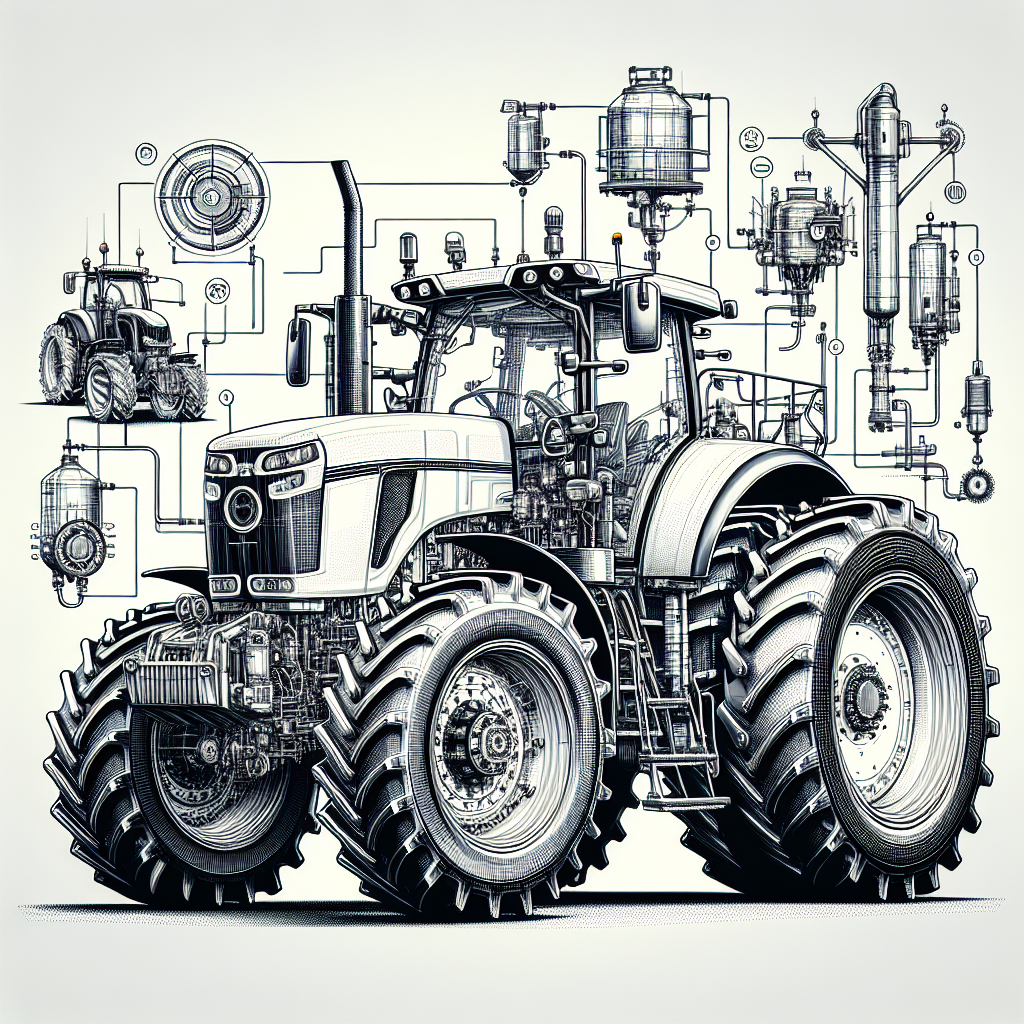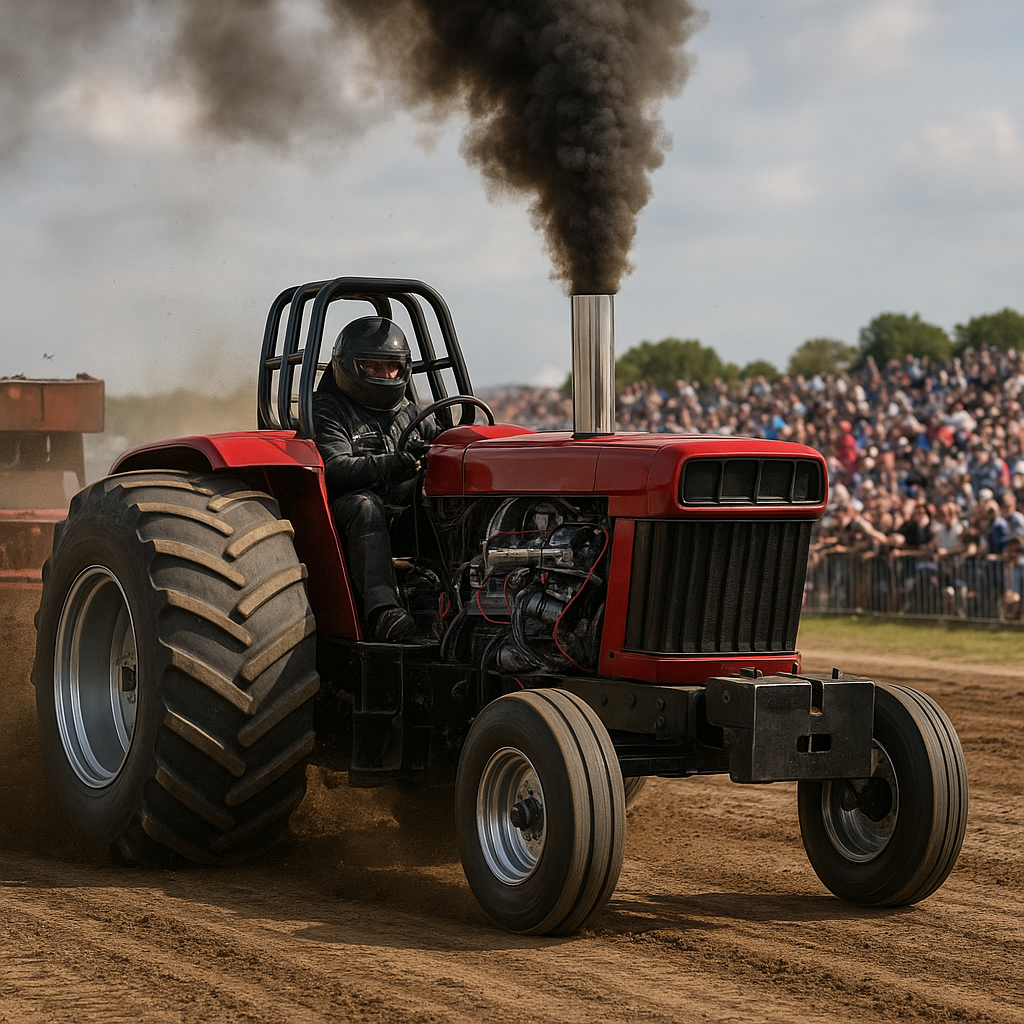Regenerative braking systems have revolutionized the efficiency and sustainability of heavy-duty tractors. These advanced systems not only enhance the performance of tractors but also contribute significantly to environmental conservation by reducing fuel consumption and emissions. This article delves into the intricacies of regenerative braking systems, their benefits, and their impact on the agricultural and construction industries.
Understanding Regenerative Braking Systems
Regenerative braking systems are designed to capture and reuse energy that would otherwise be lost during braking. In traditional braking systems, kinetic energy is converted into heat and dissipated, resulting in energy loss. However, regenerative braking systems convert this kinetic energy into electrical energy, which is then stored in batteries or capacitors for later use. This process not only improves the overall efficiency of the vehicle but also reduces wear and tear on the braking components.
How Regenerative Braking Works
The core principle behind regenerative braking is the conversion of kinetic energy into electrical energy. When the driver applies the brakes, the electric motor that powers the tractor operates in reverse, acting as a generator. This generator converts the kinetic energy of the moving vehicle into electrical energy, which is then stored in the vehicle’s battery. The stored energy can be used to power the tractor’s electric motor, reducing the need for fuel and enhancing overall efficiency.
- Energy Conversion: The electric motor reverses its function to act as a generator during braking.
- Energy Storage: The generated electrical energy is stored in batteries or capacitors.
- Energy Reuse: The stored energy is used to power the electric motor, reducing fuel consumption.
Components of Regenerative Braking Systems
Regenerative braking systems consist of several key components that work together to capture and store energy. These components include:
- Electric Motor/Generator: This component serves a dual purpose, acting as a motor to drive the tractor and as a generator to capture energy during braking.
- Battery Pack: The battery pack stores the electrical energy generated during braking for later use.
- Control Unit: The control unit manages the flow of energy between the motor/generator and the battery pack, ensuring optimal performance and efficiency.
- Braking System: The braking system includes traditional friction brakes that work in conjunction with the regenerative braking system to provide reliable stopping power.
Benefits of Regenerative Braking Systems in Heavy-Duty Tractors
The implementation of regenerative braking systems in heavy-duty tractors offers numerous benefits, ranging from improved fuel efficiency to reduced environmental impact. These benefits make regenerative braking systems an attractive option for the agricultural and construction industries.
Improved Fuel Efficiency
One of the most significant advantages of regenerative braking systems is the improvement in fuel efficiency. By capturing and reusing energy that would otherwise be lost, these systems reduce the need for fuel to power the tractor’s electric motor. This results in lower fuel consumption and cost savings for operators.
- Energy Recovery: Regenerative braking systems recover energy that would otherwise be wasted, reducing the need for fuel.
- Cost Savings: Lower fuel consumption translates to cost savings for operators, making regenerative braking systems a cost-effective solution.
Reduced Environmental Impact
Regenerative braking systems also contribute to environmental conservation by reducing emissions. By improving fuel efficiency and reducing the need for fuel, these systems help lower the carbon footprint of heavy-duty tractors. This is particularly important in the agricultural and construction industries, where large vehicles are often used for extended periods.
- Lower Emissions: Improved fuel efficiency results in lower emissions, contributing to environmental conservation.
- Sustainable Practices: The use of regenerative braking systems aligns with sustainable practices, promoting environmental responsibility in the agricultural and construction industries.
Enhanced Performance and Reliability
In addition to improving fuel efficiency and reducing environmental impact, regenerative braking systems enhance the performance and reliability of heavy-duty tractors. By reducing wear and tear on traditional braking components, these systems extend the lifespan of the vehicle and reduce maintenance costs.
- Reduced Wear and Tear: Regenerative braking systems reduce the strain on traditional braking components, extending their lifespan.
- Lower Maintenance Costs: With less wear and tear on braking components, maintenance costs are reduced, resulting in cost savings for operators.
Applications of Regenerative Braking Systems in Heavy-Duty Tractors
Regenerative braking systems are increasingly being adopted in various applications within the agricultural and construction industries. These systems are particularly beneficial in scenarios where heavy-duty tractors are used for extended periods and in challenging environments.
Agricultural Applications
In the agricultural sector, heavy-duty tractors are used for a wide range of tasks, including plowing, planting, and harvesting. Regenerative braking systems can significantly improve the efficiency and sustainability of these operations.
- Plowing: During plowing, regenerative braking systems can capture energy during deceleration and use it to power the tractor, reducing fuel consumption.
- Planting: Energy captured during braking can be used to power planting equipment, enhancing efficiency and reducing the need for additional fuel.
- Harvesting: Regenerative braking systems can improve the efficiency of harvesting operations by reducing fuel consumption and emissions.
Construction Applications
In the construction industry, heavy-duty tractors are used for tasks such as earthmoving, grading, and material handling. Regenerative braking systems can enhance the performance and efficiency of these operations.
- Earthmoving: Regenerative braking systems can capture energy during deceleration and use it to power the tractor, reducing fuel consumption and emissions.
- Grading: Energy captured during braking can be used to power grading equipment, improving efficiency and reducing the need for additional fuel.
- Material Handling: Regenerative braking systems can enhance the efficiency of material handling operations by reducing fuel consumption and emissions.
Challenges and Future Prospects
While regenerative braking systems offer numerous benefits, there are also challenges associated with their implementation in heavy-duty tractors. These challenges include the initial cost of the systems, the need for specialized maintenance, and the integration of regenerative braking with existing vehicle systems.
Initial Cost
The initial cost of regenerative braking systems can be a barrier to their adoption. These systems require advanced components and technology, which can be expensive. However, the long-term cost savings from improved fuel efficiency and reduced maintenance can offset the initial investment.
- Advanced Components: Regenerative braking systems require advanced components, which can be costly.
- Long-Term Savings: The long-term cost savings from improved fuel efficiency and reduced maintenance can offset the initial investment.
Specialized Maintenance
Regenerative braking systems require specialized maintenance to ensure optimal performance. This can be a challenge for operators who may not have access to the necessary expertise and equipment. However, as the adoption of regenerative braking systems increases, the availability of specialized maintenance services is also expected to grow.
- Expertise and Equipment: Specialized maintenance requires access to expertise and equipment, which can be a challenge for operators.
- Growing Availability: As the adoption of regenerative braking systems increases, the availability of specialized maintenance services is expected to grow.
Integration with Existing Systems
Integrating regenerative braking systems with existing vehicle systems can be complex. These systems must work seamlessly with traditional braking components and other vehicle systems to ensure optimal performance. This requires careful design and engineering to achieve the desired results.
- Seamless Integration: Regenerative braking systems must work seamlessly with traditional braking components and other vehicle systems.
- Careful Design: Achieving seamless integration requires careful design and engineering.
Conclusion
Regenerative braking systems have the potential to transform the efficiency and sustainability of heavy-duty tractors. By capturing and reusing energy that would otherwise be lost, these systems improve fuel efficiency, reduce environmental impact, and enhance the performance and reliability of tractors. While there are challenges associated with their implementation, the long-term benefits make regenerative braking systems an attractive option for the agricultural and construction industries. As technology continues to advance, the adoption of regenerative braking systems is expected to grow, paving the way for a more sustainable and efficient future.









